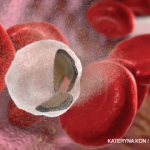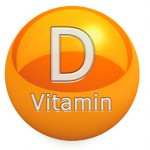All patients were referred for a clinical suspicion of osteoporosis. Reasons for referral included osteogenesis imperfecta (28%), immobilization due to cerebral palsy or muscular dystrophy (26%), chronic steroid use (13%), idiopathic osteoporosis (4%) and other reasons such as inflammatory bowel disease, celiac disease, and genetic syndromes (28%). The majority of patients (87%) were Caucasian, 62% were boys, and 14% were on anticonvulsants, which interfere with vitamin D metabolism. Interestingly, relatively few were on vitamin D and calcium supplementation (five patients), despite having health factors that are known in adults to increase the risk of osteoporosis.
The authors defined osteoporosis as the lumbar BMD being more than two standard deviations below their weight-matched and pubertal development–matched (Tanner staging) normative data. Osteopenia was defined as being >1 standard deviation below weight and developmentally matched controls. Levels of serum vitamin D were defined as “insufficient” if less than 30 ng/ml, “deficient” if less than 20 ng/ml, and “overt vitamin D deficiency” if less than 10 ng/ml.
Of the 85 patients, 73 were able to have BMD measured and 69 patients had a Z-score less than -1. Fully 80% (69 patients) had insufficient vitamin D levels below 30 ng/ml and 21.1% had levels below 20 ng/ml. The median value was 24 ng/ml, with the 75 percentile at 28.75 ng/ml. There was an inverse correlation between serum PTH levels and 25-OH vitamin D and a positive correlation between 1,25-OH vitamin D and PTH, urine pyridinoline, and deoxypyridinoline. There were no correlations between gender, age, race, anticonvulsant use, and fracture rate. Moreover, no seasonal variations of vitamin D levels were noted.
The authors conclude that low levels of vitamin D are common in children with osteopenia or osteoporosis and supplementation of vitamin D should part of the therapy of these conditions.
It appears that low bone mass is not uncommon in children with chronic diseases. Clearly, it should be treated. But how? And, to go one step backward, how does one diagnose it? Most bone densitometers will give a Z-score for the lumbar bone densities, which compares the child’s bone density to that of age-matched controls. However, children with chronic diseases are often delayed with regard to physical maturation. Thus, if one uses the machine-generated Z-score, which is based solely on age, to identify low bone mass, one runs the risk of comparing apples to oranges—and overdiagnosing osteoporosis. The authors have avoided this pitfall since they have a locally generated set of norms that use Tanner staging and weight rather than age; they corrected their results using these data.1 This information has been published, but is standardized to only one manufacturer’s machine. Even with this correction, the majority of their patients had some degree of low bone mass. The 25-OH vitamin D levels were insufficient in 80% of their patients if you use the adult data as a cut-off. This appears to be an equally valid assumption for children as PTH secretion increases as vitamin D levels drop in children, as it does in adults.


